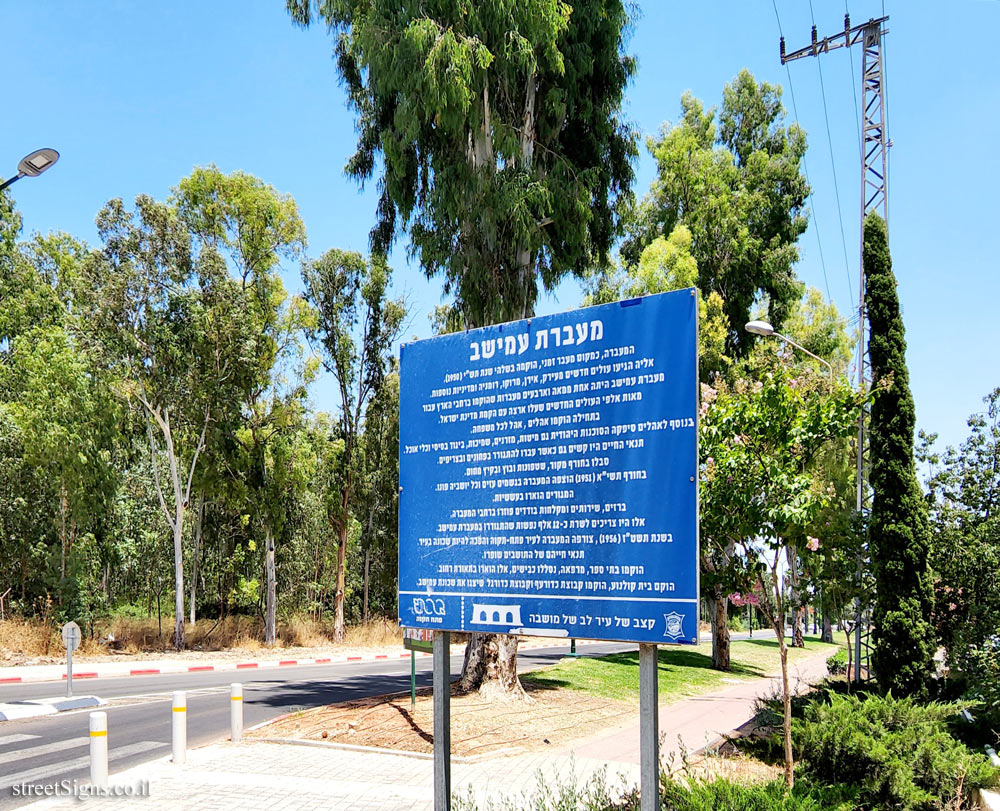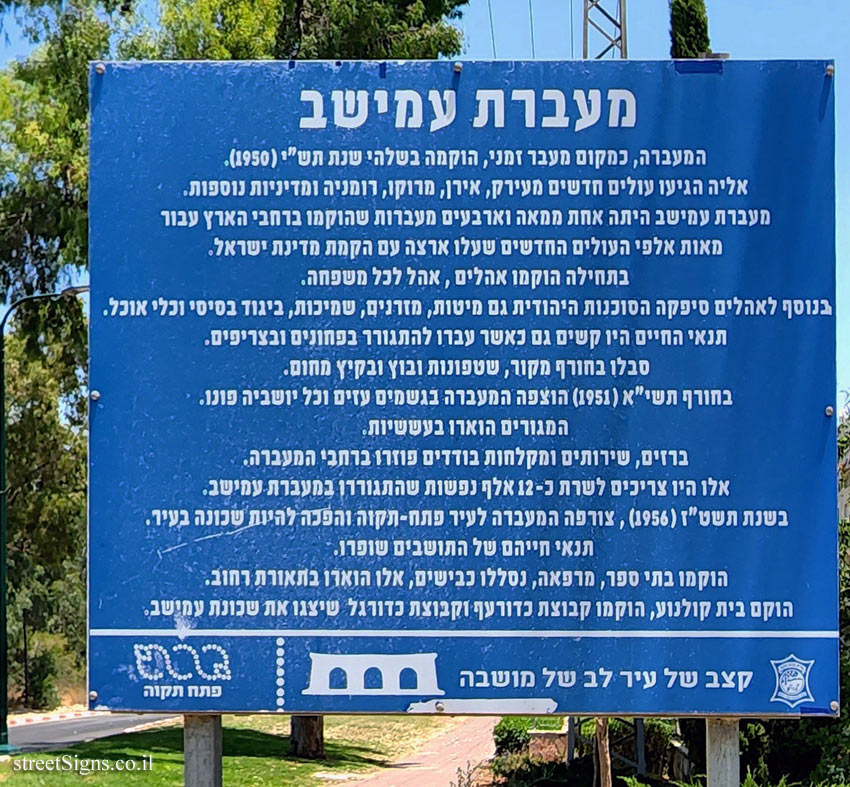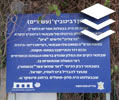One of the signs posted by the Department of Site Preservation in Petah Tikva Municipality, which indicates buildings or places that are part of the city’s history.
The area where the sign stands was photographed that day by the same photographer
 Click for a larger image Translation of the text on the sign
Click for a larger image Translation of the text on the sign:
Amishav transit camp The transit camp, as a temporary transit point, was established in the late 1950s, to which new immigrants from Iraq, Iran, Morocco, Romania and other countries arrived.
The Amishav Ma’abar was one of one hundred and forty Ma’abarot established throughout the country for the hundreds of thousands of new immigrants who immigrated to Israel with the establishment of the State of Israel.
Initially, tents were set up, a tent for each family.
In addition to the tents, the Jewish Agency also provided beds, mattresses, blankets, basic clothing and tableware.
Living conditions were difficult even when they moved to live in huts. Suffered in winter from cold, floods and mud and in summer from heat.
In the winter of 1951, the transit camp was flooded with heavy rains and all its inhabitants were evacuated.
The dwellings were illuminated with lanterns. Individual faucets, toilets and showers were scattered throughout the Ma’abara. These were to serve about 12,000 people who lived in the Amishav transit camp.
In 1956, the Ma’abara was added to the city of Petah Tikva and became a neighborhood in the city. The living conditions of the residents were improved. Schools, a clinic were established, roads were paved, these were lit by street lighting. Amishav neighborhood.
The emblem of the city of Petah Tikva
Tempo of a City, heart of a colony
Department of Site Conservation icon - Petah Tikva Municipality
Petah Tikva city branding logo



 Click for a larger image
Click for a larger image  Click for all signs belonging to Historical Sites in Petah Tikva
Click for all signs belonging to Historical Sites in Petah Tikva
 2.18 Km |
2.18 Km |  2.25 Km |
2.25 Km |  2.27 Km |
2.27 Km |  2.58 Km |
2.58 Km |  2.6 Km
2.6 Km